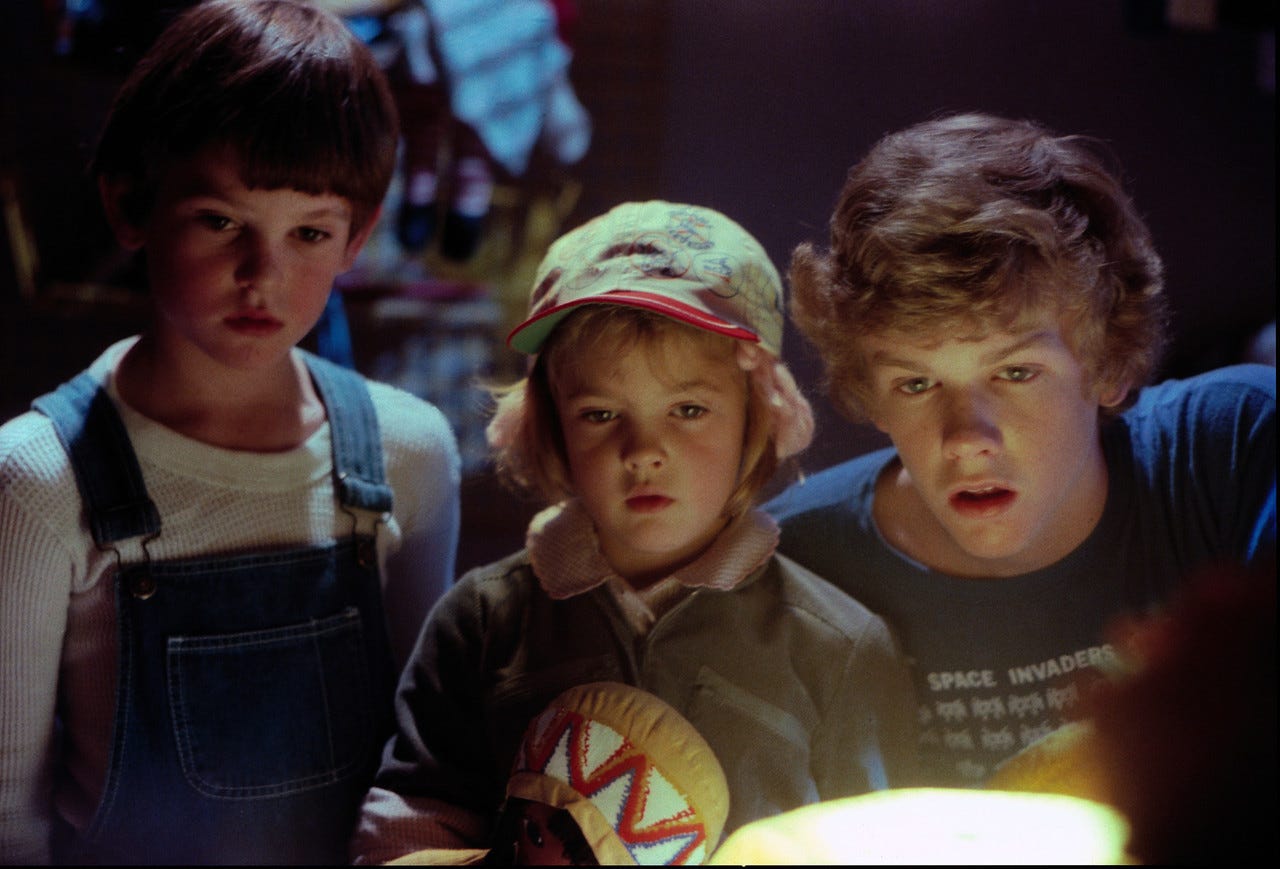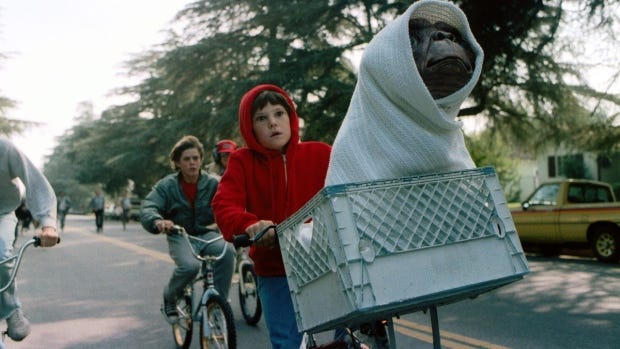"E.T. the Extra-Terrestrial" Film & Music Evaluation
This cinematic classic features a heartwarming story and memorable music that keeps it fresh even 35 years later.
In Steven Spielberg’s 1982 classic, E.T. the Extra-Terrestrial, a small alien (later named E.T.) is accidentally left on Earth by his family. E.T. finds a family in California, befriending a young boy named Elliott and his siblings. The children attempt to keep the alien a secret, but the government is hot on their trail, and a mysterious illness threatens both E.T. and Elliott.
This film isn't a traditional sci-fi film, but it still contains aliens, spaceships, and special powers, which fit nicely into the genre. What makes this film unique however is the packaging of sci-fi elements into a family movie about friendship.
Man versus the unknown is the key conflict in E.T. for various characters. E.T. faces the unknown in regards to his future, the whereabouts of his family, and the strange new planet he is stranded on. Elliott and his siblings face the unknown when they meet the alien and try to learn about where he is from, as well as when they seek answers regarding the illness E.T. and Elliott face. Even the U.S. government faces the unknown when pursuing the kids and the alien - they want answers about the UFO sightings and the mysterious creature they are hunting for.
E.T. reminds us of the power of friendship and accepting those different from us. E.T. and Elliott form a special bond, in a way due to their many similarities. The two feel like outsiders - E.T. has been left behind by his family, while Elliott has been left by his father. Their friendship over the course of the film shows that despite the apparent differences that an alien and human should seem to face, they have more in common than they do different.
The character and story in E.T. are hard to separate from one another, largely due to the fact that characters are so important to the story’s progression. An important part of understanding the story is understanding the characters. Audiences need to understand E.T.’s loss and his desire to return home, as well as Elliott’s emotional attempts to cope with his parents’ divorce. These two characters connect on a fundamental level, and this drives the story (but the story in turn impacts the characters, which makes it codependent).
The director’s focus in the film is in making a social statement on coming of age, finding one’s place, and coping with loss. The arrival of E.T. helped Elliott fill the void that was left through his family’s separation. The alien creature not only became Elliott’s friend, but also brought him closer to his siblings and friends. In a way, E.T. helped Elliott find his home just as much as Elliott helped E.T. find his.
The film’s strengths are numerous - a wonderful storyteller like Spielberg and an emotionally gripping tale such as this are sure to lead to terrific results. Spielberg (as usual) found great child actors and directed them to provide convincing and emotional performances. John Williams’ score is one of his best (more on that later), and the cinematography created some lasting shots. Even the figure of E.T. himself still holds up relatively well, thanks to some impressive effects and creature design.
The film has aged a tad, which is its main weakness. A few comedic scenes don’t have the same impact they likely would have in 1982, and the plot can be predictable. Newer films rarely contain the “big bad guy” that this film does, and this causes a few scenes to feel campy. However, these are all minor nitpicks and do not detract from the overall impact of the story.
Musical Analysis
John Williams wrote the score for E.T., going on to win his fourth Oscar for the music in the film. Steven Spielberg, as always, offers nothing but praise for Williams and his score. Interestingly enough, Williams requested that the film be cut to match his musical theme rather than the typical method - a score being edited to match the film. "John asked that we simply let him perform his theme without trying to measure it closely with the edited film," says Spielberg. "It worked so well that we took the last scene back to the editing room and conformed out pictures to John's interpretive conducting."
Though it can be hard to explain, Williams has found a way to match music to film in a way that few others have. In fact, the reason it can be so hard to explain is because he has managed to attain the elusive qualities it takes to create such a perfect match. E.T. thrives when Williams’ music is brought to the forefront, such as the famous flying scene and the finale. Certain parts of the score seem a little outdated, such as the music for the “bad guys,” but it is in keeping with the times and still works for the film.
The best way to describe the music is once again through a Steven Spielberg quote. "John's score to the movie E.T. is unlike any of his others. It is soothing and benign. It is scary and suspenseful and, toward the climax, downright operatic. For me, this is John Williams' best work for the movies. John Williams is E.T."

Closing Thoughts
E.T. the Extra-Terrestrial remains one of the best family films in cinematic history, and everything from the effects to the shot angles and the music holds up as a piece of excellent filmmaking. While not without its imperfections, such a gripping and emotional experience deserves to be praised. This cinematic classic features a heartwarming story and memorable music that keeps it fresh even 35 years later.




